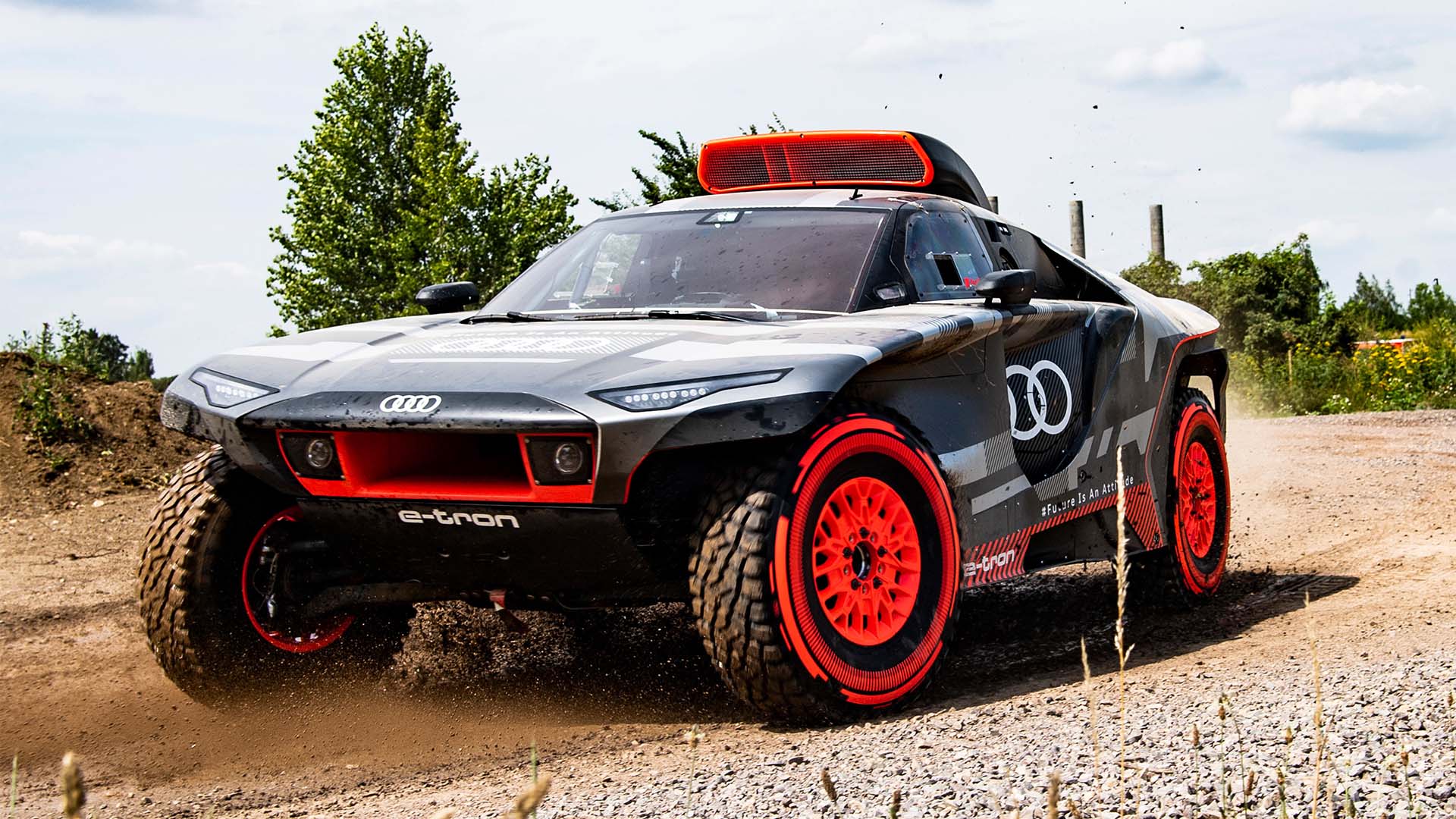

In case you missed it, Audi is competing in next month’s Dakar Rally with the RS Q E-Tron, a badass, gullwing-doored, electrified rally truck using powertrain tech sourced from both Formula E and DTM. Namely, it’s got three electric motors from the automaker’s electric-only open-wheel racing effort and a gas-powered generator lifted out from under the hood of a German touring car.
The cool engineering in the RS Q E-Tron extends beyond propulsion methods, though, because here’s something that caught my eye within Audi’s technical rundown of its Dakar competitor’s cabin: a regenerative handbrake. Among the E-Tron’s airplane-like cockpit littered with screens and switches sits a big, double-cranked aluminum handbrake—very noticeable since the absence of a manual transmission means it’s the only prominent lever there. Much like how regular EV brakes often perform dual duty recuperating electricity as well as slowing down the car, Audi has adapted the RS Q’s handbrake to do this as well.

“It is coupled with the innovative brake-by-wire system that combines the hydraulic brake with a recuperation system. So pulling on the handbrake helps to recover energy, as does operating the footbrake,” reads Audi’s press release.
In rallying (and throughout the nation’s high school parking lots), handbrakes are used to trigger slides often as an entry strategy going into a corner. With the RS Q E-Tron, Audi’s Dakar racers can now use energy recuperation as an excuse to do gnarly sand-soaked slides.
In other news, I have now started a petition to have Audi implement a similar system and bring the manual e-brake back into the next-gen, plug-in hybrid RS3. The police can’t give me a ticket for drifting through intersections if I say it was for efficiency, right?


Got a tip or question for the author? You can reach them here: chris.tsui@thedrive.com